Subscribe to our ▶️ YouTube channel 🔴 for the latest videos, updates, and tips.
Standard Unit of Capacity
In measurement of capacity we will learn about the standard unit of capacity and volume.
Measurement of Capacity:
Let us learn the concept of measuring the capacity of a container using another container. James filled a jug using 4 bottles, but Mary filled the same jug using 5 cups.
Thus, you can say that the jug can hold 4 bottles or 5 cups of water.
The capacity is the quantity of liquid a container can hold.
We know that the two basic units for the measurement of capacity are litre and millilitre. Litre is the standard unit of measurement of capacity.
Litre is written as ‘l’ and millilitre as ‘ml’.
1 litre = 1000 millilitres or 1ℓ = 1000 mℓ
We know that the maximum quantity of a container or vessel can hold is called its capacity.
The capacity of a vessel is also called it’s the inner volume. We use the word volume as the amount of space taken up by a solid. If the mouth of the vessel is closed, it is like a solid. So the space taken by a closed mouth vessel will be called the outer volume of the container/vessel and the capacity of the vessel will be similar to the inner volume of the vessel.
Liter is the standard unit of capacity and the smaller unit of capacity is milliliter. In short liter is written as ‘l’ and milliliter as ‘ml’.
Liter (l) and milliliter (ml) are related to each other as:
1 liter = 1000 milliliter (1 l = 1000 ml).
Different liquids (milk, kerosene oil, diesel, petrol etc.) are measured in liters. Different liquid medicines are measured in ml.
To measure smaller quantities of liquid we use millilitres (ml) and to measure larger quantities of liquids we use litres (l).
Liquids like milk, kerosene oil, diesel, petrol, etc. Are measured in litres, whereas medicines, juice can, soft drink cans etc are measured in ml.
Soft drink in small bottles is measured in millilitres whereas in large bottles it is measured in litres.
There are some standard sized vessels or container of different shapes of one-liter capacity which are used to measure liquids.
Containers used for Measuring Capacity:
Various types of measuring containers are used to measure the capacity of different liquids.
Measurement of Capacity:
Review:
The quantity of a liquid that a container or vessel can hold is called its capacity or volume.
1. Litre is useful for measuring large quantities of liquid.
2. The sign of litres is 'ℓ'.
3. Millilitre is useful for measuring smaller quantities of liquid.
4. The sign of millilitres is 'mℓ.
5. To change of ℓ into mℓ. Multiply by 1000 or put 3 zeros (000) on the right
1000 ml = 1ℓ
Now, change 5ℓ into mℓ
5ℓ = 5 x 1000
= 5000 mℓ
6. To change of ℓ mℓ into mℓ.
Change the ℓ to mℓ and then add the mℓ.
Now, change 2 ℓ 97 mℓ into mℓ
2 ℓ 97 mℓ
= 2 ℓ + 97 mℓ
= 2 × 1000 mℓ + 97 mℓ
= 2000 mℓ + 97 mℓ
= 2097 mℓ
7. Conversion of 'mℓ' into 'ℓ' and mℓ.
Divide the number of mℓ by 1000 then quotient in it is ℓ, remainder in it is mℓ.
5641 mℓ into ℓ and ml
= 5641 ÷ 1000
= 5 is quotient and remainder is 641
So, 5641 mℓ = 5 ℓ 641mℓ
Worksheet on Measuring Capacity:
Questions and Answers on Standard Unit of Capacity:
I. Match the following:
Answer:
I. (i) → 3
(ii) → 1
(iii) → 2
II. Complete the following table:
|
Object |
Estimated Capacity |
Actual Capacity |
|
A water bottle |
__________ |
__________ |
|
A cup |
__________ |
__________ |
|
A teaspoon |
__________ |
__________ |
|
A milk can |
__________ |
__________ |
|
A
bucket |
__________ |
__________ |
III. Convert into millilitres:
(i) 9 ℓ = _____ mℓ
(ii) 5 ℓ = _____ mℓ
(iii) 4 ℓ = _____ mℓ
(iv) 1 ℓ = _____ mℓ
(v) 5 ℓ 231 mℓ = _____ mℓ
(vi) 6 ℓ 123 mℓ = _____ mℓ
(vii) 8 ℓ 243 mℓ = _____ mℓ
(viii) 4 ℓ 245 mℓ = _____ mℓ
(ix) 2 ℓ 100 mℓ = _____ mℓ
Answer:
III. (i) 9000 mℓ
(ii) 5000 mℓ
(iii) 4000 mℓ
(iv) 1000 mℓ
(v) 5231 mℓ
(vi) 6123 mℓ
(vii) 8243 mℓ
(viii) 4245 mℓ
(ix) 2100 mℓ
IV. Convert into litres and milliliters:
(i) 4000 mℓ = ______________
(ii) 6671 mℓ = ______________
(iii) 1450 mℓ = ______________
(iv) 3030 mℓ = ______________
(v) 2721 mℓ = ______________
(vi) 5028 mℓ = ______________
(vii) 8673 mℓ = ______________
(viii) 1536 mℓ = ______________
(ix) 7039 mℓ = ______________
(x) 8621 mℓ = ______________
(xi) 9999 mℓ = ______________
(xii) 6895 mℓ = ______________
Answer:
IV. (i) 4 ℓ
(ii) 6 ℓ 671 mℓ
(iii) 1 ℓ 450 mℓ
(iv) 3 ℓ 30 mℓ
(v) 2 ℓ 721 mℓ
(vi) 5 ℓ 28 mℓ
(vii) 8 ℓ 673 mℓ
(viii) 1 ℓ 536 mℓ
(ix) 7 ℓ 39 mℓ
(x) 8 ℓ 621 mℓ
(xi) 9 ℓ 999 mℓ
(xii) 6 ℓ 895 mℓ
● Related Concepts
● Conversion of Standard Unit of Capacity
From Standard Unit of Capacity to HOME PAGE
Didn't find what you were looking for? Or want to know more information about Math Only Math. Use this Google Search to find what you need.

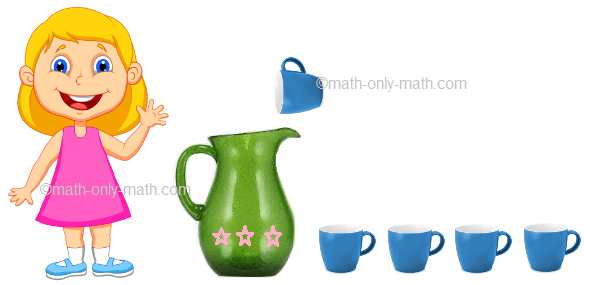
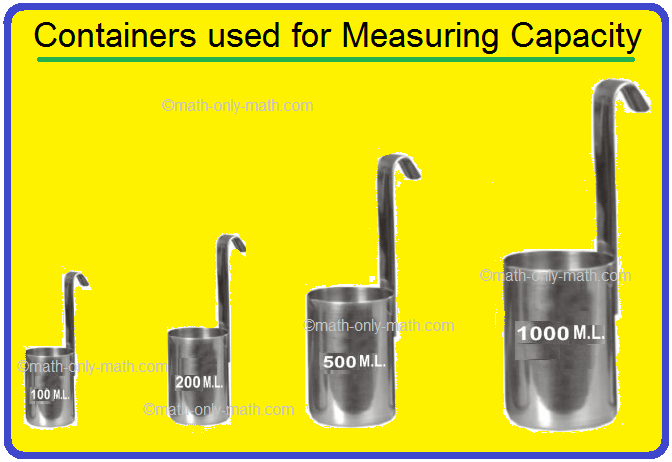
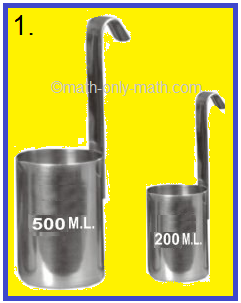
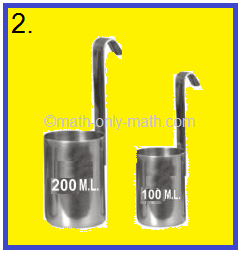
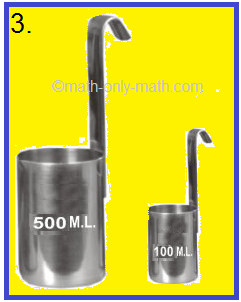


New! Comments
Have your say about what you just read! Leave me a comment in the box below. Ask a Question or Answer a Question.